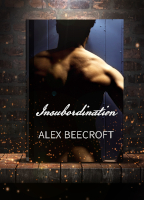Write On – Plunging into Plot
A lot of people have said a lot of things about plot, and I find it difficult to say anything different. But, as ever, I’m going to attempt it anyway.
Many of the how to write books I’ve read define plot as conflict. The character wants something, something is stopping him achieving that, there is conflict between him and the antagonist (be that another character or some more abstract force) and plot is what happens in an attempt to get that conflict resolved.
I tend to think this is all very well for certain sorts of stories but doesn’t apply to all stories. I would say that the essential thing you need to keep in mind in order to generate a plot is that something interesting ought to be happening.
In the old days, I plotted by chapter. I would write a numbered list of however many chapters I thought would make a good book, (usually around 25) and I would try to think of something interesting to happen in each chapter.
The Witch’s Boy, for example opens when Oswy – who has (offscreen) been sold as a slave to the local lord – meets his new master for the first time, thinks he’s about to be cut up for spell-components and tries to escape. I don’t know whether I would call this a conflict or not, because what Oswy doesn’t know is that he’s in no danger from the lord (no conflict there) and the guards can’t really be arsed to keep a watch on him, because he’s got a tracking spell on him which will bring him home anyway. He thinks he’s cunningly outwitting the lord and his guards, but really there’s no contest.
So I don’t know – it’s not conflict, but I hope it is something interesting.
And then of course, the ball is rolling. Once something has happened in the first chapter, it starts to make new things happen as a result. Either he gets away – in which case he’s alone in the wilderness as a runaway slave, and all kinds of bad things might happen – or he gets caught and sent back – in which case we find out what the lord and his henchmen really intend to do with him. (And we, the writer, have to decide what that is.)
Basically, plot is a series of interesting happenings, each one caused by the one before it, and causing the one after it.
Once one character is set on a sequence of interesting events, you can make the book longer and more interesting by adding a couple more characters. Each of these need to have something interesting happen to them. Then, once it starts happening, it needs to continue to be interesting until the character can begin to control the plot thread and wrestle it into a satisfying conclusion.
If you have more than one character in operation at once, each with their own series of events, all the plot threads need to influence each other. Character A’s flight from false accusation brings the police into Character B’s shady antiques business, and as a result, Character B hides his stolen diamond in the ghastly vase Character C has just bought. Then, later in the novel, C drops the vase when B tries to tackle him to the floor. C resists, and B falls in front of a train – and later A finds the diamond on the train tracks when he’s trying to shelter there in his state of penniless ruin.
Conventional wisdom is that your characters should not be passive. They should not be acted on by circumstances, but should be the ones who drive their own story. As always, I think this is mostly true, but I have caveats.
Not all characters will be the kind of people who have a burning desire for something and immediately set out to achieve that desire. I think it’s entirely OK to start off with a character who is acted upon, and turn them active as you go along. They can be catapulted into the story by outside circumstances, but at some point they do need to decide to take charge of their life and start trying to affect the world, rather than allowing it to always affect them.
For example, take two books about boys who go to wizard school. Ged of the Earthsea books is an active character – he always wanted to be the greatest mage who ever lived, and pretty much from infancy he is striving hard to get to that goal. (Only to be humbled later on when he all but destroys himself through his pride and ambition.) But Harry Potter starts off as a passive character, who has no real desires or drive until he gets his Hogwarts letter. Even then, things tend to happen to him for a large part of the book before he decides it’s up to him to do anything about them.
If your character has no pressing desires to start out with, don’t worry too much. It’s OK to start with the world forcing interesting things on them. They’re bought by a sorcerer, who’s decided he needs an apprentice. They accidentally witness a murder and the murderer decides to hunt them down to silence them. They are thrown out of a plane and mysteriously end up in another world. A dinosaur breaks down their front door and they’re too busy trying to survive to (a) sit around being passive or (b) wonder where it came from.
How your character reacts to this first interesting thing depends very much on their personality, so if they are a particularly lumpen and inactive sort of person, they may react to the dinosaur incident by running across the street, phoning the police, making a cup of tea while the authorities deal with the animal and then going back to their life as an insurance salesman with a shrug and a ‘well, none of my business’. This would be a valid reaction in real life, but in a story it runs the risk of (a) being quite dull and (b) bringing the story to an end.
You have a lot of book to fill, so naturally the thing to do is to choose whichever reaction (out of a choice of ‘what would a character like this do’) which will lead to the most fascinating thing possible happening next. If your character is the kind of person who honestly wouldn’t ever do anything interesting, then he may not make a good hero. Consider giving the job of protagonist to someone else and making him a phlegmatic sidekick. He might be quite amusing in that role.
The way your character reacts to this first interesting incident both illustrates what kind of personality he has and creates the next interesting situation. He shoots the dinosaur with the gun for which he doesn’t have a gun licence, and when he gets back from reporting it to the police, the body is gone, replaced by the body of a middle aged woman with a tattoo over her eye. Now the police think he’s a murderer… what does he do next to clear his name?
Or he flings a steak from the fridge into his car, traps the dinosaur, and runs the car off the end of the pier (you’d better go back and make sure he lives at the seaside) only to have the car eaten by an ichthyosaurus. At which point he decides there’s something fishy going on, and because he’s that sort of person he becomes determined to figure out what it is.
The art of plotting is the art of making sure something interesting happens next. You need to combine this with the art of structure, which we discussed before, and make sure that things actually get more interesting as they go along, that sometimes (particularly around the mid point of the novel) they get surprising as well as just interesting, and by the end they have passed ‘interesting’ altogether and evolved into ‘nailbiting’, ‘catastrophic’, ‘awesome’ and then (to use Tolkien’s word) Eucatastrophic at the end. (Well, unless you want an unhappy ending.)
As a rule of thumb, if you start the book with dinosaurs trying to eat someone, you’d better end it with dinosaurs trying to eat everyone, or – at the very least – dinosaurs trying to eat everyone the main character ever cared about, and probably the Queen/President too. If you start with a worrying ooze of ectoplasm down the wall, and you finish with the builders putting a damp course in and the problem going away, it will be a short and somewhat non-existent plot. (Unless you then do a Scooby-Doo and discover the builders put the ectoplasm there in the first place so they could frighten the character out of his house and use the basement to tunnel across and rob the local bank.)
Nowadays, instead of plotting by chapter, which tended to mean writing 4000 words on each interesting thing, I plot by scene – which means about 2000 words on each interesting thing, leading to there being two interesting things happening in each chapter. Ideally this means I have doubled the fascination of every chapter. But the principle of the thing is the same.
Make interesting things happen – that’s all you really need to know about plot.

